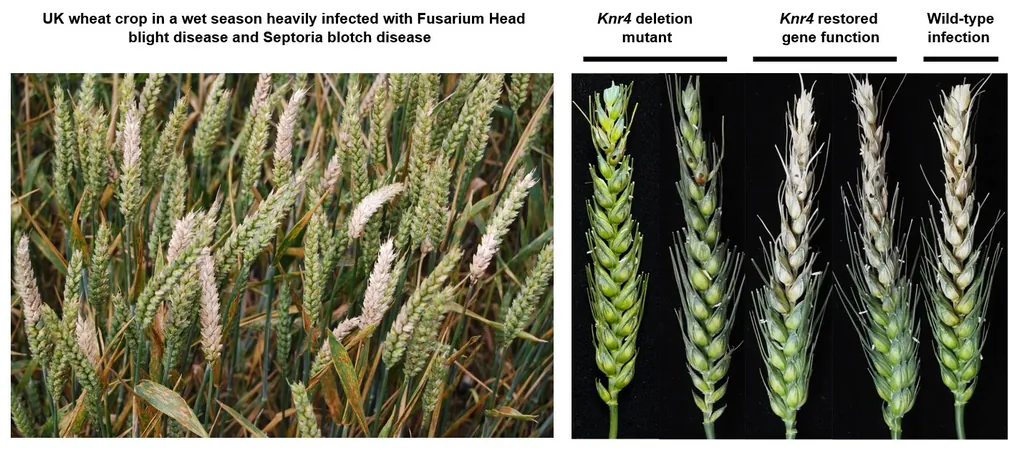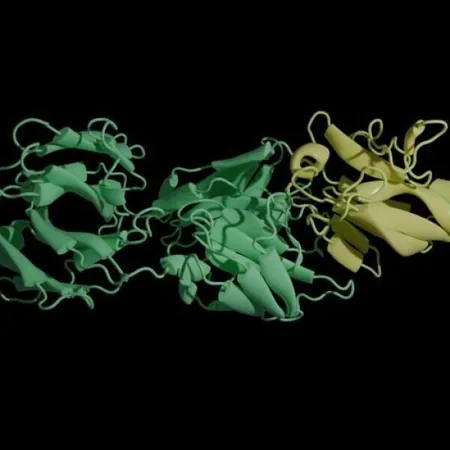
Breakthrough Discovery: 'Killer' Fungal Gene Holds the Key to Combatting Wheat Diseases!
2025-01-09
Author: Arjun
Introduction
In a groundbreaking study, researchers have identified a critical gene linked to the virulence of certain fungal pathogens affecting wheat crops. This gene, known as Knr4, could be the game-changing target for developing innovative strategies to control devastating plant diseases, including Fusarium Head Blight (FHB) and Septoria tritici blotch (STB).
Research Collaboration
Scientists from Rothamsted Research, in collaboration with the University of Bath and the University of Exeter, utilized advanced pathogen-host modeling to analyze the interaction between Fusarium and wheat for the first time. This breakthrough approach allows them to pinpoint active genes during infection and understand how they translate into proteins that drive the infection process. Their findings were recently shared on the preprint server bioRxiv.
Importance of Knr4 Protein
By examining a comprehensive genome of over 14,000 genes, the research team emphasized the importance of the Knr4 protein, which plays a crucial role in regulating growth and stress responses in the fungus. Notably, when researchers knocked out the Knr4 gene in Fusarium, the pathogen lost its ability to spread within the wheat spike, drastically reducing its virulence. This was similarly observed with Septoria tritici, marking Knr4 as a pivotal player in fungal infections.
Expert Insights
Dr. Erika Kroll, the lead investigator, stated, "Since Knr4 is found exclusively in fungi and absent in plants and animals, targeting this gene may allow us to diminish the infectivity of these pathogenic fungi without adversely affecting wheat crops or other species. This could indeed transform our approach to managing these serious pathogens."
Gene Interaction Analogy
Dr. Kroll likened the investigation of gene interactions to navigating a city map where vital connections between locations are essential for traffic flow. In this biological context, genes act as interconnected hubs, and disrupting one of these key intersections, like Knr4, could halt the entire fungal network, preventing its survival and spread.
Consequences of Fungal Diseases
Fungal diseases, particularly FHB and STB, represent the top culprits behind significant global wheat yield losses, accounting for approximately 2%-3% each. With rising challenges in fungal management and increasing regulations on fungicide use due to environmental concerns, the need for new control techniques has never been more urgent.
Innovative Control Pathways
Potential pathways for innovative control could include developing targeted chemical fungicides aimed specifically at inhibiting the function of the Knr4 protein or utilizing RNA interference methods to suppress fungal gene expression. As restrictions tighten around fungicide usage, the urgency to discover new therapeutic targets intensifies alongside the threat of growing pathogen resistance.
Significance of Research
Dr. Kroll added, "Identifying new target sites for control is critical. This research not only enhances our understanding of the mechanisms necessary for fungal virulence but also paves the way for effective agricultural disease control strategies."
Historical Context of Knr4
Originally discovered in the model yeast fungus Saccharomyces cerevisiae, the Knr4 gene is named for its role in conferring resistance to the killer nine toxin produced by another yeast species. This newfound focus on Knr4 could signal a profound shift in how we combat agricultural pathogens, potentially safeguarding future crops from the clutches of destructive diseases.
Conclusion
Stay tuned as this research unfolds and explores revolutionary approaches to ensuring food security against the backdrop of climate change and increasing pest resistance!



 Brasil (PT)
Brasil (PT)
 Canada (EN)
Canada (EN)
 Chile (ES)
Chile (ES)
 Česko (CS)
Česko (CS)
 대한민국 (KO)
대한민국 (KO)
 España (ES)
España (ES)
 France (FR)
France (FR)
 Hong Kong (EN)
Hong Kong (EN)
 Italia (IT)
Italia (IT)
 日本 (JA)
日本 (JA)
 Magyarország (HU)
Magyarország (HU)
 Norge (NO)
Norge (NO)
 Polska (PL)
Polska (PL)
 Schweiz (DE)
Schweiz (DE)
 Singapore (EN)
Singapore (EN)
 Sverige (SV)
Sverige (SV)
 Suomi (FI)
Suomi (FI)
 Türkiye (TR)
Türkiye (TR)
 الإمارات العربية المتحدة (AR)
الإمارات العربية المتحدة (AR)